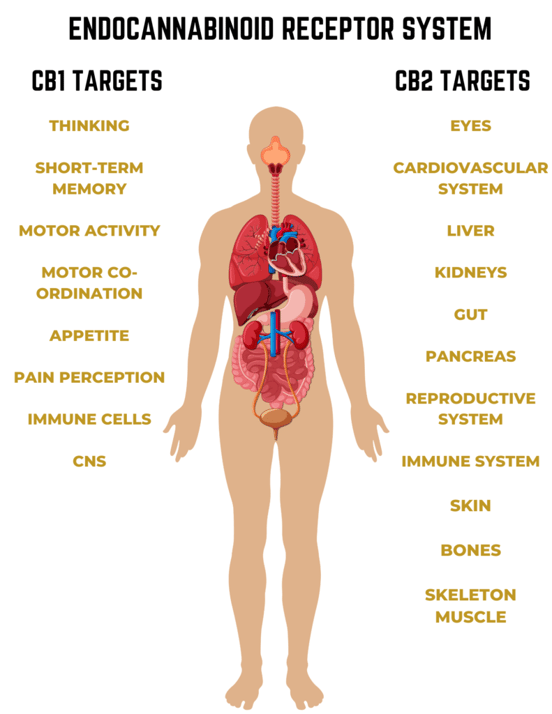The endocannabinoid system helps cannabis produce therapeutic and psychoactive effects in people. Is this because our bodies are hardwired to consume cannabis? Naturally, cannabinoids are the active chemical compounds in the cannabis plant.
The human endocannabinoid system is a major system that works to help maintain homeostasis within the body. Homeostasis is the body’s natural ability to maintain balance, and the functions necessary for life.
The ECS plays an important role in a number of physiological functions. Subsequently influencing the central and peripheral nervous systems, and peripheral organs.
Evidence states that all vertebrate species have an endocannabinoid system. Cannabinoid receptors, endocannabinoids and metabolic enzymes are the three main parts.
Endocannabinoid Receptors
The two main cannabinoid receptors are CB1 and CB2 receptors. Mainly, CB1 receptors are in several brain regions. They are also in lower levels throughout the body. These receptors are responsible for mediating the psychoactive effects of THC. CB2 receptors are in immune cells, seen throughout the body.

Endocannabinoids
First on our list: Endocannabinoids. These molecules that bind to and activate the body’s cannabinoid receptors. The body synthesizes endocannabinoids the same way it synthesizes cannabinoids found in the cannabis plant. Surprisingly, endocannabinoids are occur naturally within the body. The two main endocannabinoids are anandamide and 2-AG.
Metabolic Enzymes
Broadly, metabolic enzymes maintain & repair all body organs & tissues. Metabolic enzymes in the ECS break down endocannabinoids after their use.
Emerging Research
Emerging cannabinoid research is modulating the activity of the ECS. This may present effective therapeutic treatment options for a wide range of diseases and conditions. This includes mood disorders, spasticity, neuropathic pain, multiple sclerosis, spinal cord injury, cancer, glaucoma, osteoporosis and more.
The endocannabinoid system plays such a large role in promoting homeostasis within the body. Thus, cannabinoid-based treatments may hold tremendous promise for certain patients. Cannabis presents an option to those with diseases and conditions that don’t respond well to traditional treatments. Ultimately, a growing number of preclinical studies and clinical trials are underway. They are already uncovering novel therapeutic approaches for such cannabinoid-based treatments.

